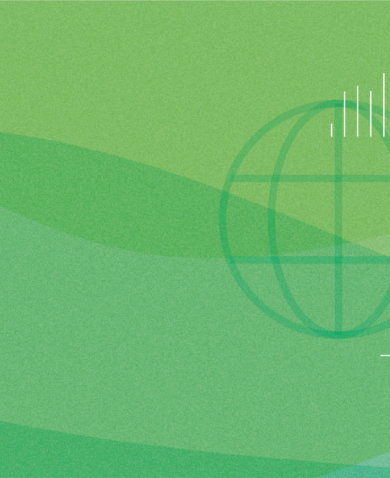
Why Privatization Has Not Improved Power Supply in Nigeria
April 6, 2017 | 5 Minute ReadAbout 95 million Nigerians don't have access to electricity and others experience frequent outages. Guest blogger Zira John Quaghe explains how Nigeria can improve its power supply.
This is a guest blog post that was originally posted on Ventures Africa.
While gas shortages, inadequate transmission, and losses pose critical bottlenecks, the main challenge for the power sector in Nigeria is the lack of liquidity (or weak commercial viability) of actors along the value chain — from gas-to-power production to power generation, transmission, and distribution. Once there is sufficient flow of funds and a visible path to profitability, investments in improvements and expansion will alleviate losses as well as gas and transmission inadequacies.
Insufficient power supply is perhaps the least understood yet the most widespread developmental challenge in Nigeria, affecting consumers across locations, sectors, and socioeconomic strata. It is widely believed that insufficient power supply in Nigeria is due to low generation capacity. It may surprise many that Nigeria utilizes only a third of its available generation capacity: while only 3500 to 5000 megawatts are typically operational, Nigeria’s installed generation capacity stands at 12,522 megawatts. You may ask, why would a country starved for power have so much idle capacity? It is a combination of gas supply shortages and inadequate transmission capacity to wheel the entire available capacity. Analogically, idle generation is like a car with a large engine capacity but short on fuel (gas supply) and with inadequate tires (transmission). Beyond the issue of idle generation, a staggering 40 percent of the energy generated is lost due to the aggregate technical, commercial, and collection (ATC&C) losses, well above the North American and European average of 8 percent.
The key challenges are further discussed in more detail below:
Lack of liquidity and high losses
Distribution companies are not collecting enough cash from consumers to cover the costs of power production and delivery. Hence, the bulk trader — the Nigerian Bulk Electricity Trading Plc (NBET) — is unable to pay generation companies due to debts owed by distribution companies. In the fourth quarter of 2016, on average, NBET received payments for only 17 percent of power sold to distribution companies. The deficits are caused by chronic losses coupled with poor collection mechanisms. Given that the power sector investment framework is dependent on NBET’s ability to absorb risks of on-payments across the value chain, there is very little symmetry between power generation and cost recovery. Market inefficiencies at the current scale will only drive away investment and pile up debts.
Insufficient transmission capacity and public management of the market and system operators
The Transmission Company of Nigeria (TCN), which is still publicly owned, has been inefficient in technically and commercially operating the sector. This inefficiency finds its origins in the decades of public sector management that plagued the electricity sector prior to privatization. The transmission system (or national grid) is insufficient to wheel the total available generation capacity and the government has been slow to expand the grid. When the sector was vertically integrated under the National Electric Power Authority (NEPA), there was no proper accounting for energy generated and sold. In other words, there were no defined trading points between actors along the chain.
Insufficient and unstable gas supply
Despite huge natural gas reserves (being the country with the ninth-largest proven reserves of natural gas), Nigeria has yet to fully harness gas production for its domestic power needs. Only 56 percent of available gas-fired generation capacity is operational, mostly due to lack of gas supply. Experts argue that the gas shortage is primarily due to economic disincentives in the form of the domestic supply obligation (DSO), which prices gas-for-power below competitive market rates. Other challenges are inadequate gas infrastructure and recurrent vandalism. Going by Nigeria’s energy mix (85 percent gas-fueled), the regulator must ensure that consumers cover costs plus a reasonable rate of return on investment for both the power and gas-to-power value chains.
What can be done to address Nigeria’s challenges?
Notwithstanding power sector privatization, the government remains a vital player in enabling investment in the sector. Power transmission, regulation, training, and financial guarantees are among areas where the government’s role is critical to ensure the functional performance of the sector. The current minister for power, works, and housing, Babatunde Fashola, has announced that the government’s strategy for transforming the power sector is to attain “incremental, steady, and uninterrupted” power supply. To achieve incremental power, the government aims to solve the “problems of yesterday,” primarily by reducing losses and resolving legal and regulatory disputes holding back projects. Attaining steady power entails increasing generation capacity on the grid while promoting captive and off-grid power generation. When generation exceeds the demand for power, the government will ensure uninterrupted supply by consolidating commercial viability of the firms and promoting energy efficiency.
In addition to the ongoing efforts by the government to grow Nigeria’s power sector, we propose the following interventions:
Ease liquidity constraints
Additional funds (through government loans) will help firms along the chain partially offset accumulated debt incurred from collection shortfalls, and improve credit-worthiness and overall service delivery in the long run. The government’s recent 702 billion naira disbursement to NBET through the Economic Growth Recovery Plan, in March 2017, would help ease liquidity constraints in the near term. While this is step in the direction, pumping public funds into the highly inefficient market bears the risk of even greater losses and slower progress towards a cost-reflective power market.
Facilitate transactions and boost generation
The government should assist project developers by minimizing regulatory hurdles and facilitating access to finance and financial guarantees, such as the guarantees used in the financial closure of the Azura Independent Power Project. Additionally, the government should seek ways to unlock alternative sources of infrastructure finance such as the Pension Funds and Sovereign Wealth Fund. The National Integrated Power Projects (NIPPs) should also be accelerated to increase generation and transmission capacity.
Reform the transmission sector
It does not help that the government is holding on to transmission. The role of TCN transcends technical management of the grid as the system operator (SO). It also functions as the commercial administrator of the entire electricity market through their market operator (MO) function. The transition of TCN into an independent systems operator (ISO) and transmission service provider (TSP) should be accelerated to promote market confidence.
Reform the gas sector
Liberalizing the gas-to-power market and removing the DSO cap (which prices local gas-for-power below competitive international market rates) would be a step in the right direction. However, in reality, it does not matter whether international gas prices align with the DSO price because there are unique risks and costs in operating in Nigeria. Once there is sufficient profit (resource rents) in the gas-to-power value chain, investors will see opportunity and make it work.
Develop a strategy to ensure electricity affordability
Policymakers and regulators should find ways to ease tariff burdens on consumers by reevaluating the tariff structure based on the purchasing power of consumers. Developing a strategy to manage the affordability factor, while ensuring that the total quantum of tariffs is sufficient to cover investments in the entire chain will improve collection and promote liquidity across the value chain.
Expand access to off-grid electricity and renewable energy
Attaining Nigeria’s aggressive electrification targets of 90 percent access by 2030 will require a two-pronged approach. While expanding on-grid power, the sector should also facilitate the development of business and consumer solutions for off-grid energy. Renewable energy companies serving the off-grid market should be supported and barriers to entry (such as high import duties and access to finance) should be reduced.
If Nigeria is to diversify and industrialize, it needs to fix its power sector because reliable power supply is vital to growing its share of manufacturing and service-based sectors. This much is clear: Nigeria has a huge, power-hungry, and viable market for investment, along with abundant energy resources. But unfortunately, this is also clear: the liquidity crisis has put the sector in dire straits and there seem to be a lack of appreciation of the importance of power supply to Nigeria’s economic development. To attract investment in power, the government must re-think its approach to governing the sector by shifting from traditional risk-averse and rigid regulatory frameworks (such as those applied in its natural resources sectors) to dynamic regulatory tools with sound risk management mechanisms that promote competition, while protecting its broader societal goals.


































